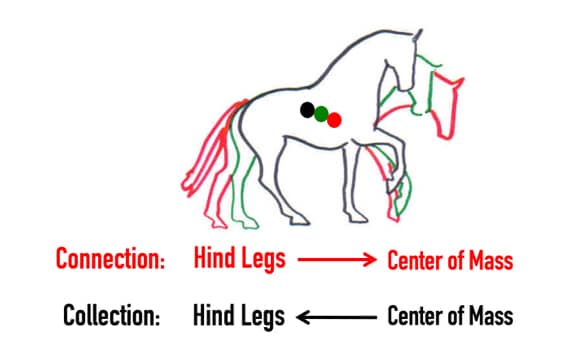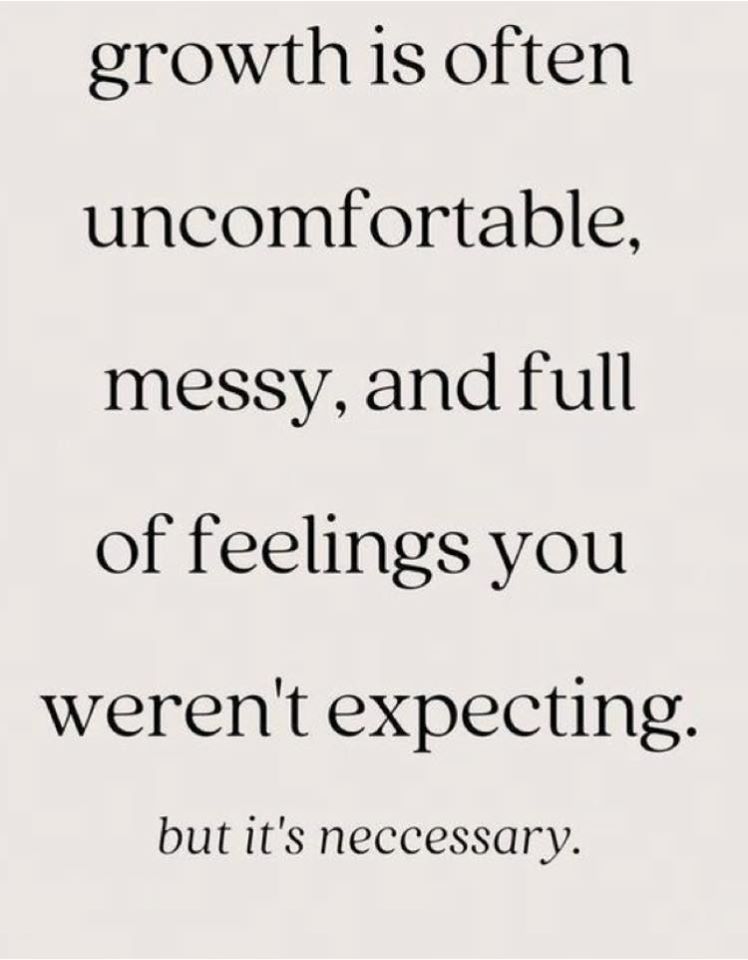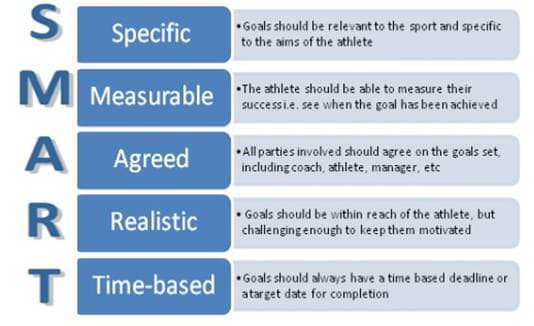
There’s often a lot of confusion over collection - is it slower? What should the neck be doing? Neck up? Quarters down? Shorter through the back? I think these two diagrams are the best description I’ve seen. Collection is a change of balance where more ‘weight’ or ‘centre of mass’ is transferred onto the hind end by asking for more engagement. To improve engagement the rider needs to activate the hind leg then use the seat to half halt, keeping all the extra energy in and over the hind leg giving the horse more ‘push’. It’s this engagement that allows the shoulders to feel like they come up as the horse uses more core strength to lift the back and let the hind leg become more under the body. Ideally the rhythm (and tempo) should stay exactly the same throughout all the different levels of collection. The neck shouldn’t become shorter or tighter than it does with less collection, you still want the horse to work correctly through and over its back into the end of your rein. If the neck coils like a spring the horse can’t be working correctly over the back. If in doubt go back to the scales of training pyramid - the rhythm, suppleness, contact, impulsion and straightness come before collection which means we should prioritise the bottom of the pyramid over the top. Top Tips * make sure your scales of training are in place * You need a good reaction off the leg first. * Perfect the half halt - leg, seat and rein. (The rein only to correct suppleness). It should feel like a tiny ‘pulse’ that lasts a split second. * Introduce it for a few strides then ride out of it - quality is better than quantity!

I often tell my riders to ride messy. Sounds a bit odd but here’s the logic. As riders a lot of the time we try and cover up our and our horses issues (that’s what we’re taught to do in a test) . Whether that’s preempting that our horses will fall out, drop behind the leg, spook, be above the bit, loose bend - the list goes on. We often then end up fiddling and working really hard to keep everything together, which most of the time leads to a grumpy horse who doesn’t understand why your applying 100s of aids at once. Here’s where it gets hard ... letting it fall apart. Horses learn by corrections, if your always covering issues they never make the mistake for you to correct. Once you allow and correct the horse can begin to learn and understand. Also you might be covering mistakes that aren’t there out of habit. Now corrections should be simple, clear and small - allowing your horse to understand without tension. So my top tips: * Stick to only using a few aids at a time and make your instructions easy to follow. * If you have an issue go back to the scales of training * Check that your position and aids are correct. * Think about why it’s happening before jumping to the first correction you think of.

The whole idea of setting goals can be both exciting and daunting - you want to set goals that are challenging but achievable and realistic. The first step to setting goals is to think about where you are now and to be really honest with yourself about it. This also sets a good base line to measure against later in the year. Thinking “well I’m secure at X level” is a good start but you need to drill this down into detail across multiple areas for it to be of much benefit to then analyse your ‘performance’. Areas to consider can be; scales of training, test movements, horse fitness/muscular development, rider fitness and mindset. Ideally you need to give yourself a score from 0-10 across as many areas you can think of - the more specific the better. For ridden movements I find it really useful to break each movement down into 3 scores; - knowledge - Do you know what the movement is and what it should look like? - Understanding - do you understand how to ride the movement? - Performance - how well do you execute the movement? This makes it really easy to see if there’s some gaps in the theory that need to be addressed and where you’re strengths and weaknesses are Most of these aspects will still be quite broad such as; “my canter-trot transitions are a strength and shoulder in is a weakness”. It’s then important that you look at why certain things are a strength and why things are a weakness - so the phrase turns into “my canter- transitions are a strength because my horse is well connected and responds well to the half halt preparation aids” “my shoulder-in is a weakness because although we can keep the angle, we lose the connection and bend because my horse needs to be stronger to have more engagement from the hind leg to sustain self carriage.” This then gives you a lot more information and allows you to see if there is an overall theme that repeats itself across multiple areas (can be related to knowledge, understanding or performance). Once you’ve identified the core strengths and weaknesses you can think of a plan of how to keep your strengths and work on your weaknesses. This is where your coach might come in handy Before we jump into setting goals it’s really important to think about what makes up a good goal. A good goal should push you to improve but also be achievable with a bit of grit and determination. There’s no point in setting a goal that isn’t achievable - it’s bad for our mental health and motivation. A example of a bad goal would be me saying ‘I’m going to ride a test on my young horse this year’ - he’ll be 2 this year, it’s not going to happen for at least 3 years! The acronym S.M.A.R.T is to help set good goals. Goals should be; - Specific - Measurable - Achievable and Agreed - Relevant - Time Based There’s other things to also consider when making goals are things such as; time and other commitments, finances, any injuries or medical issues. This is where everything should start to slot into place! When I start setting goals i think about my big goals and then break them down into the smallest components that I can think of. Thinks like; movements, way of going, fitness, qualification criteria and anything else that you think has an effect. Your performance profiling should help you identify most of these areas and prioritise which have the greatest effect first. This should help give you focus but remember about the S.M.A.R.T acronym - the biggest mistake I see is not putting a time scale on goals. Another common mistake is to put a % as a goal - scores and percentages are an opinion and are effectively out of your control. For example; what one judge might give a 70% another might give a 67% - it’s not that one judge is wrong and another is right it’s just that different judges have different opinions and priorities of what they want to see. That’s not to say we should forget about scores completely, but by working on the components and way of going the general trend of your results should improve. I’ve attached the worksheet that I use myself and with my clients. Give it a go and let me know what you think!